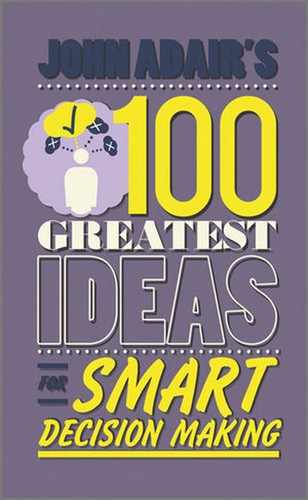Idea 71: The holistic mind at work
In 1927 Field Marshal Jan Smuts, a keen agricultural scientist as well as a soldier and statesman, published a book entitled Holism and Evolution. Holism was the word he coined to describe the tendency in nature to produce wholes by ordering or grouping various units together.
The essential realities in nature, so Smuts wrote, are these irreducible wholes. They cannot be analyzed into their parts without losing this holistic quality. His neologisms – holism and holistic – subsequently entered the English language.
Anybody who has responsibility for the affairs of an organization, whether their title is chief executive, general manager, president or managing director, has to take a holistic view of it. Indeed, holistic thinking is the key to strategic thinking in any field.
Systems As Holistic Concepts
Another word that has worked well as a label for this box of mental attitudes and faculties is system. We are surrounded by systems, wholes that are made up of interacting parts while somehow transcending them.
Look at a candle flame. Why does it keep at approximately the same size and shape while it’s flickering? In this case, the ‘parts’ are flows of vaporized wax, oxygen and burnt gases. The processes of combustion and diffusion give the interactions between these flows, and these interactions show us at what size and shape the flame will be approximately stable.
The strength of a rope is another example of a holistic property. This strength is a result of interaction among the individual strands, caused by twisting. With the strands untwisted, the rope’s strength is governed by the weakest strand; twisted, the strands act together and increase their strength.
A holistic mind therefore has a special way of looking at things or people, at the world itself. It is not eager to take things to bits at first glance. Rather, it waits to see the full pattern, the whole – the wood rather than the trees. Equal mental weight is given to the whole in relation to the parts, hence there is a certain reluctance to dismember it. If a cruel schoolboy pulls the legs and wings off a fly he is left with a dead fly: the parts are there but the whole is gone.
Thinkers such as Einstein exemplify this union of formidable powers of analysis with a strain of holistic thinking that seeks out the simple or the whole.
Werner Heisenberg, one of the fathers of quantum physics, once spoke to Einstein of the ‘almost frightening simplicity and wholeness of the relationships which nature suddenly spreads out before us’.
This theme of simplicity, wholeness and beauty, revealed through mathematical formulae or detailed experimentation, recurs again and again as nature’s mysteries are explored.
There is definitely a family relationship between imagination and holistic thinking. Take as an example this description of the crucial phase in composition by one of the world’s great composers, Wolfgang Amadeus Mozart. I have put key words in bold to emphasize the proximity of the two concepts of holistic and imaginative work in this particular passage:
First bits and crumbs of the piece come and gradually join together in my mind; then the soul getting warmed to the work, the thing grows more and more, and I spread it out broader and clearer, and at last it gets almost finished in my head, even when it is a long piece, so that I can see the whole of it at a single glance in my mind, as if it were a beautiful painting or a handsome human being; in which way I do not hear it in my imagination at all as a succession – the way it must come later – but all at once as it were. It is a rare feast. All the inventing and making goes on in me as in a beautiful strong dream. But the best of all is the hearing of it all at once.
‘A whole is more than the sum of its parts.’
